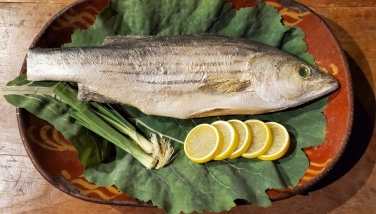Petite Exhibit: Really Fake Food: Creating Faux Fare
On display for the holiday season in a petite exhibit at the National Historic Register Wilson-Warner House is a collection of plaster and silicone molds used to create artificial foods.
This group of imitation foods and their molds were created by the late Lindsay Grigsby (1943-2021) who gifted them to the HOF a few years ago. He originally created them for a Virginia museum foundation. Grigsby believed that the remainder of his collection should go to a small museum site where it could make a bigger impact. The HOF is honored to exhibit some of the molds with their foods for the first time. The petite exhibit is included with regular museum admission.
There is no better time of the year than this to bring out the food props that enliven our Christmas exhibitions every year. The accurate looking foods which are often made of plaster, resins, baked clay, and even building construction supplies, bring on another dimension to the believability of an exhibit. Most museum visitors really become attracted and excited over the “cookery” on display.
The HOF has utilized the services of many well-known “bakers” for its custom faux food assortments over the years with sources from New Jersey to Maryland to Texas. Of course the online purchases typically used for restaurant props have become pretty popular too. Real foods and drinks are not an option for museums as they spoil, spill, and attract bugs and rodents which can ultimately harm textiles and other collection objects. Don’t miss this behind-the-scenes glimpse of one method in creating really fake food.
This petite exhibit is included with general museum admission.



